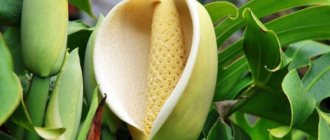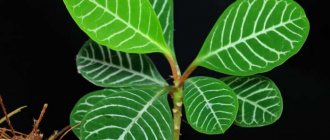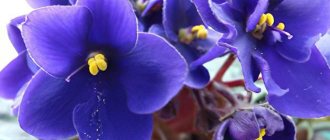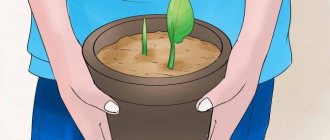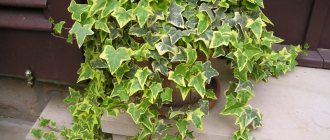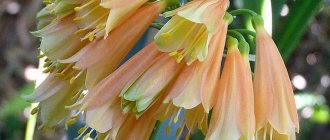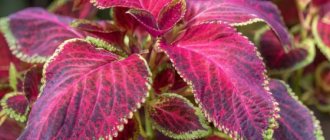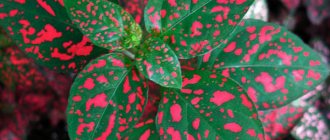Deer horns. Description of the plant
The antler flower (photos are presented in the article for cultural reference) is a large epiphytic plant with branched roots located in the upper zone of the leaves and under the root scales.
Deer antler flower
Leaves may be spore-bearing or sterile. The latter is characterized by a wide size, spreading and round shape. The leaves fit rather tightly to the branches and trunk with a loose upper edge. It forms a niche into which precipitation falls along with debris from dying fern leaves.
Over time, enough humus accumulates in the niche to serve as a substrate for the roots of cultivated plants.
The spore-bearing leaves are located on short petioles and are characterized by a flat shape and a dense cuticle. Leaves are erect. When the green mass hangs down, it resembles antlers. Sporangia control plant reproduction and photosynthesis. They are located at the top of the leaves, giving the lower part a reddish tint.
General information
The epiphytic plant Platycerium grows in the wild on tree trunks and branches, sometimes reaching very large sizes. It has 2 types of leaves and roots. Some are sterile, resembling pockets or saucers in appearance, designed to protect against drying out, as well as collect water, dead insects, moss and small leaves. Such organic matter rots and provides food for the fern, and also serves as additional support.
The second type of leaves resembles deer antlers. These are spore-bearing, unfolded, beautiful wide leaves that can grow up to 1 meter in length. They begin to release spores for reproduction only when they reach 5 years of age. Until this moment, such foliage is covered with whitish, barely noticeable threads, which conserve moisture and are a natural protection from bright light.
It has short roots with long single branches. Some species of this fern grow in colonies, forming dense green growth on tree trunks, while others grow in individual specimens. In houses and apartments, they are grown in transparent vessels filled with moss, wide clay pots, hanging plant pots, plastic containers with slots, or on pieces of damp wood.
Plant conditions
Growing in an apartment does not require much labor. Just follow agronomic standards, and then you can grow a beautiful, lush bush.
Lighting
The flower loves bright light, but it must be protected from sunlight. If the rays hit the green mass, it may burn. To do this, it is preferable to place the container with stems on the western or eastern side of the house. It is necessary to provide sufficient sunlight for the crop. Otherwise, the green mass will become thin, sag, darken and lose elasticity.
Temperature
The crop should grow comfortably at temperatures between +20 °C and +25 °C. It is not recommended to reduce the usual values, as there is a risk of root rot. A decrease in temperature is allowed in the winter season, when the indicator will fluctuate between +14 °C - +17 °C.
Humidity
Good humidity is one of the most important criteria for this crop, since this plant is native to the tropics. Humidity in the house should fluctuate around 80%. To maintain this level, constant watering with small drops is required.
A humidifier and a tray of damp expanded clay placed next to the container can help. This will help maintain the desired humidity level. If air humidity is low, the condition of the fern will worsen.
Soil and drainage
To grow Platycerium, you can use a suitable layer of soil in which orchids are grown. It can be bought at any flower shop.
However, for the full development of flower culture, a mixture of the following ingredients is suitable:
- One part each of moss and crushed pine bark.
- Several parts of leaf soil and an equal amount of washed river sand;
- 4 parts of high-moor peat;
The flower develops rather slowly, so it needs a small container, slightly larger than its roots, made of any material.
Watering
For watering, use soft liquids at room temperature. The top layer of soil should be moistened when the top layer first dries. Avoid overwatering as this can cause root rot. Water less often in winter.
How to care for platicerium at home
How to water
Platycerium should be watered sparingly. A common cause of plant death is waterlogging, but the soil should not dry out. In spring and summer, allow the top layer of the substrate to dry between waterings. With a seasonal decrease in temperature, it is allowed to dry the soil by 1/3 of the volume of the earthen clod. It is better to drain excess water from the pan.
When grown on a piece of bark, water by completely immersing the root system in water. Let the excess liquid drain and return the plant to its original place, after which do not water for several days.
If you need to be away for a long time, place the pot on a tray of damp sphagnum moss or wrap moistened moss around the roots (if growing on bark).
Air humidity
Air humidity should be about 60%. For this purpose, regularly spray the plant with a fine spray. For spraying, as well as for watering, you cannot use ordinary tap water. The surface of the leaves is covered with small scales that store moisture and if you spray with low-quality water, the holes will become clogged. For this reason, the sheet plates should not be wiped with a damp sponge; dust should be shaken off with a brush. When watering with tap water, the substrate quickly becomes salty. Ideally, for “water procedures” they take melt water, rain water, tap water must be filtered or allowed to sit for 1-2 days.
You can increase air humidity in other ways: periodically place it on a tray with damp moss, pebbles, expanded clay; place an aquarium, a decorative fountain or a regular container of water in the room; use special devices (humidifiers, steam generators). Remember that with the beginning of the heating season, it is better to keep any plants away from hot radiators.
How to feed
From April to the end of August it is necessary to feed the platycerium. You can use complex mineral fertilizers or formulations marked “For ferns.” Dilute the liquid fertilizer (it is better to make the concentration half that recommended on the package) and add it with water for irrigation. Fertilize monthly.
Instead of fertilizing, it is useful to add tea leaves to the soil after brewing or banana peels (they need to be finely chopped and mixed with the substrate).
Methods of growing and propagating plants
The stem can be propagated at home by seeds or vegetatively by separating the apical shoot in the spring. Its length should be at least 10 cm. The seedling should be rooted in peat and sand and kept under a plastic cover in a bright place.
When transplanted, it can be propagated quite easily and quickly by dividing the rhizomes. The most labor-intensive method is sowing spores. To do this, use small pots, into which you should add a drainage layer with a nutrient mixture based on leaf soil, peat and sand.
How to transplant platycerium to an epiphytic block
The root system of Platycerium is small, even young plants are replanted once every 2 years, adults - even less often.
1. Prepare plants for replanting. There are no specific requirements regarding their size, just for the seedlings to survive, the leaves must be at least the size of an adult's palm.
2. Cut the plants out of the pot. To remove plants, do so carefully so that the roots do not break. Use a knife as a tool. Use a knife to make a hole in the edge of the round pot to separate the seedling from the pot. Then turn the pot and continue to separate the earthen lump with a knife. Even if the pot breaks, it will not break the roots.
3. Remove the plants from the earthen ball and move them to a horizontal block.
4. Add sphagnum moss. To speed up the establishment of Platycerium roots on an epiphytic block, you need to add a little sphagnum moss between the staghorn roots and the block. It’s a good idea to add moss on top of the earthen ball, as well as on the sides. This will retain more moisture when watering and speed up root growth.
5. Secure the plants. Once you add the moss, secure the plant to the block with string or thin wire. It is enough just to bandage it twice crosswise.
Platycerium is often grown on pieces of bark (you can hang such a structure on the wall - like deer antlers, only green) or in hanging baskets. Attach it to the tree using sphagnum moss and fishing line; it is advisable to sprinkle a little leaf humus inside the lower leaves (“head of cabbage”). As it grows, the gap between a piece of bark (or epiphytic block) and the leaves increases - add leafy soil there every spring; under no circumstances should you remove old dry leaves, they will rot and feed the platycerium.
How to grow a plant: step-by-step instructions
It is recommended to grow the Deer Antler flower (the photos will help beginners grow the plant and choose the optimal place for it at home) from seeds from January to March.
To do this, follow the instructions below:
- Spread the seeds on the surface of the soil layer, pressing them lightly, but not covering them.
- The seeds should be placed in a warm place and the container covered with plastic or glass. Make sure there is shade. This can be done with a light curtain or paper.
- Caring for seedlings is easy; just ventilate the container several times a day and water if necessary.
- For seed germination, a temperature of +16 to +18 °C is required. Glass with shading material should be removed after the first shoots appear.
- The seedlings will need to be harvested after 5 weeks and covered with plastic wrap for 3 days. After several leaves appear, the seedlings should be transplanted into separate pots with a diameter of up to 8 cm.
Plants bloom within 12 months after sowing the seeds.
Description of placiterium
Platycerium leaves are divided into 2 types: sterile and spore-bearing. Sterile shoots form at the base of the fern. They turn yellow in summer and remain green in autumn. They feed the root system, it is better not to touch them.
Platycerium, the flower of which rarely blooms indoors, perfectly decorates a room even with simple green shoots.
After it reaches the age of 5 years, its upper leaves begin to acquire spore-bearing properties. They are covered with thin threads that prevent the plant from overheating and drying out.
The plant is popularly called platicerium deer antler, because. the leaves really resemble deer antlers.
Types and varieties
Platycerium, the species of which are very diverse, easily takes root in a new place. Let's look at popular types.
- Platycerium bifurcatum. The popular variety came to our lands straight from Australia. Sterile leaves of a round shape can grow up to 8-9 cm in length. Spore-bearing shoots reach a length of 100 cm. The variety is also called platicerium bifurcated.
- Platycerium grande. The leaves grow up to 60 cm wide. They are cut to the middle of the plate and practically do not dry out.
- Platycerium superbum. The variety is similar to the large platicerium, the care for which is no different. The main difference is the presence of 1 spore area, while the large variety has 2 areas.
We also recommend reading about epiphritis plants.
Plant propagation instructions
Propagated by division in accordance with the following points:
- First, carefully inspect the bush and determine the places where pruning is permissible. They should be placed in such a way that each specimen has healthy and complete roots and leaves.
- Then make cuts with a knife previously soaked in alcohol. After making the cuts, cover the cut areas with wood ash.
- Then separate each part of the plant into separate containers.
This method of reproduction is the simplest and most effective. Over time, the flowers form a daughter bush, which cannot develop separately from the parent rosette. Gradually it will get stronger and begin to grow roots. At this point, the offspring will need to be carefully separated from the crop and planted in a separate container. The advantage of propagation is that the parent bush does not need to be replanted.
Step-by-step algorithm for propagating Platycerium using spores:
- Spores should be collected from the back of the spore-bearing outgrowths. Then they should be left for a while to dry thoroughly.
- Next, prepare a small container and fill it with a layer of mature potting soil.
- Then water the soil thoroughly and place the spores on the surface without submerging them in water.
- Cover the container with film or glass to create greenhouse conditions.
- The container should then be placed in a warm, bright place.
- The greenhouse should be constantly ventilated, and if necessary, moisten the soil layer using a sprayer.
- 42 days after the first shoots appear, the glass or foil should be removed.
- When the seedlings grow up, they will need to be planted in separate pots.
This distribution method is quite complex and is therefore rarely used. The advantage of this method is that several new seedlings can be obtained at the same time.
Reproduction of Platycerium
Growing Platycerium from spores is very difficult and requires sterility. Spores retain the ability to germinate for many years. They are germinated in Petri dishes, on compacted, disinfected peat-sand-compost soil, treated with fungicides. The seedlings are very sensitive and difficult to preserve.
Dividing adult, overgrown platyceriums with the separation of young side plants with their own roots as independent ones is the most productive and simplest method of propagation. When dividing, you need to be careful, cut off the shoots with a sharp blade, without injuring the surrounding barren leaves of the mother plant. In the first weeks to adapt, you need to water the fern more carefully, but increase the air humidity to maximum.
Preparing the soil for replanting
For replanting, the staghorn flower requires a small container, which will be slightly wider than the previous one, but of the same depth. Growing photographs will help gardeners prepare the substrate correctly.
Preparing the soil for replanting:
- First, the pot must be filled with a layer of drainage. Chopped brick or expanded clay are suitable for this. Drainage prevents moisture stagnation.
- Then the container should be covered with a layer of soil. A mixture used for ferns or orchids will be suitable.
- If necessary, a small amount of charcoal can be added to the soil.
You can make your own potting soil. Mix turf with leaves, sand and peat. The ingredients must be mixed in equal quantities. Make sure the top layer of soil is slightly acidic.
Step-by-step instructions for transplantation
When replanting, all actions must be careful, since the flowering plant is difficult to tolerate various damages.
Step-by-step instructions for replanting flowering plants:
- The flower must be carefully removed from the old container, preserving the old lump of earth. Transplantation should be carried out using the transshipment method.
- Then the plant should be transplanted into a new pot with prepared substrate.
- Cover any remaining empty spaces with fresh potting soil.
- When finished, sprinkle with water.
Why does the plant dry out and turn yellow?
A flowering plant may become diseased or turn yellow if not cared for properly. Eventually, it may wither completely.
Wilting can be caused by several factors:
| The plant begins to wither | Leaves begin to turn yellow |
| The soil is moistened too little or too often | The temperature in the room where the flower is located reaches above +25 °C |
| The room temperature is very low. | The crop is exposed to direct sunlight |
| Exposure to cold drafts | Excessive fertilization. |
| Watering with chlorinated, hard or cold water. |
Pest and disease control
Most problems with indoor plants arise from poor maintenance or improper care. It is necessary to monitor the condition of the crop and take into account negative influences. If the air is too humid, the stems become covered with gray mold. It appears as brownish spots on the leaves. Succulents should be treated with a special antifungal drug. Leaf spot is another fungal disease that can occur on the plant.
Symptoms include small yellowish spots on the leaves that gradually turn brown. Infected leaves fall off. The fungus must be controlled with fungicides.
One of the dangerous pests of flowering plants is lepidoptera, which is resistant to insecticides and can cause great harm to the crop. The infected plant should be isolated from other vegetation, treated with a solution of laundry soap and insects removed.
Then four consecutive treatments should be carried out at intervals of 1 week. If the infestation is severe, insecticides must be used. The plant may be damaged by mealybugs, which can be removed using a soap or alcohol solution followed by an insecticide. It is recommended to spray the leaves with mineral oil.
Fertilizers for plants
The Staghorn flower (the photo will tell the gardener how to grow the plant at home) is considered an unpretentious crop that does not require constant addition of mineral or organic fertilizers. If the plant is overfed, it will grow slowly and stop blooming. In the end, he may die.
Mineral mixtures
The plant should be fertilized no more than once every 30 days. Due to its slow growth, the plant only needs a small amount of fertilizer. Absolute can be used as a complex fertilizer. The solution should be prepared in accordance with the instructions included with the drug. The concentration should be reduced by 2 times. Fertilization should be carried out from April to September, since the rest of the time the flowers are dormant.
Organic fertilizers
Gardeners recommend placing scalded tea leaves or banana peels under the dome, which form a sterile green mass. The procedure should be performed twice every 7 days.
Types of indoor platicerums
Of the almost two dozen species in nature, only a few platyceriums are grown as indoor plants.
Platycerium bifurcatum is a compact, spectacular, growing flathorn with symmetrically double or triple dissected leaves with tongue-shaped lobes. The maximum leaf length is 80 cm.
Platycerium grande is a powerful large species, capable of exceeding 1 m in diameter, with fan-shaped leaves more than a meter long and wide. Sterile leaves are whole and round.
There are more often unnamed hybrids and varieties on sale that are more adapted to both dry air and the temperature of ordinary rooms.
Platycerium bifurcatum. © _rustic.garden
Platycerium grande. © aka__paula
Possible difficulties in growing
Some difficulties may arise if cultivation is carried out on a flat area. The plant needs a lot of moisture in the air. However, this is difficult to achieve indoors. Therefore, you will need an air humidifier, use a tray with expanded clay and spray the crop with finely divided drops. Plants need a lot of light.
With a lack of light, the leaves turn yellow, wither and fall off. If your apartment or house receives little sunlight, you will need additional lighting in the form of lamps.
If the air humidity is high and the flower does not have enough water, the leaves wither and fall off. To improve the situation, it is necessary to adjust the watering regime. If a plant is overfed with organic compounds, it stops blooming. To solve this problem, temporarily stop fertilizing. If a plant is slow to flower and loses its leaves after flowering, it needs more fertilizer.
Signs and superstitions about the flower
Antlers are often grown at home. However, when we rely on fortune telling and superstition, the plant is treated differently:
- the plant is often called wormwood, accusing it of provoking husbands to cheat.
- This flower helps protect against harmful radiation, influences career growth and attracts good luck;
- culture feeds on the energy of family conflicts, provoking them in rare cases;
In general, however, antler flower has a very good effect on people. Only culture should not be placed in the bedroom. This is because fern plants are capable of releasing small amounts of toxic substances that can cause headaches and nightmares in very sensitive people. Photographs of the crop will tell you where it is best to place a pot with a plant so that it brings happiness and benefit.

